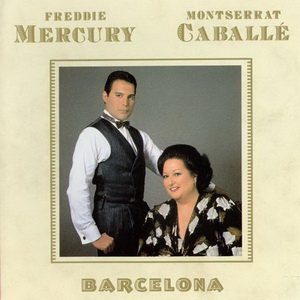02-14-2006 – BBC Hampshire – Freddie’s Trousers
Freddie Mercury may have departed for the great stage in the sky but his red leather trousers live on – and they’re in need of some TLC. We spent the morning with the conservators at Winchester’s Textile Conservation Centre to find out more.
Laying beside a Mandarin warrior costume and a medieval tapestry, Freddie’s bright red leather-look trousers, packed with a protective filling, look oddly lifelike and it feels almost rude to be staring at them so intently.
“It’s amazing”, said Doon Lovett, conservator in charge of restoring the small Freddie collection in the hands of Winchester Textile Conservation Centre (TCC). “I don’t know whether I can say this but I’m stuffing things up and down his legs and in through his waist.”
“I think particularly for – dare I say it – for someone my age. I’m in the same era as him and he was a great hero. He was someone there on Top of the Pops every week!”
“It’s very surreal and it provides hours of entertainment for my colleagues here. It’s been fantastic – I suppose it’s sort of celebrity status, and intellectually, it’s been a huge challenge trying to work out what’s the best thing for the trousers.”
Doon is a part of the commercial wing of the TCC, which also provides state of the art facilities for textile research and undergraduate study. Freddie’s garments were given to the centre for restoration, and are eventually intended for museum display.
“In terms of a fabric’s preservation, putting them in a dark cupboard is the best thing you can do”, said Doon. “But there has to be compromises. There’s no point – in my opinion anyway – in shutting something away in a box for ever and ever.”
Freddie’s red trousers are actually made from cotton coated with a thin layer of polyurethane and date from the early 80’s – not long considering the centuries old tapestries that are also undergoing restoration at the centre.
“Everyone has this idea that modern fabrics are indestructible”, said Doon. “But in fact there are some that are very unstable – and polyurethane happens to one of them.”
Since 1999 the TCC has been based within the campus of Winchester School of Art, but spent its first 25 years working from grand but unsuitable premises at Hampton Court Palace.
Centre Director Nell Hoare oversaw the move and is in no doubt that the new building has benefited the professionalism and profile of the centre.
“One of the reasons we wanted to move is that it’s quite difficult to do the things that we do here – science based things that need fume extraction and all sorts of other things – in a Tudor palace”, she said.
The centre is now based in a purpose built building at the heart of the Winchester School of Art campus and is a part of the University of Southampton.
“It was agreed that we should be on this campus with the Winchester School of Art because there is a lot of other relevant activity – textile design, fashion, textile history going on here – it’s a very textile-based campus really”, she said.


